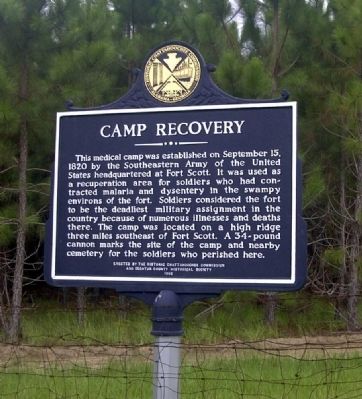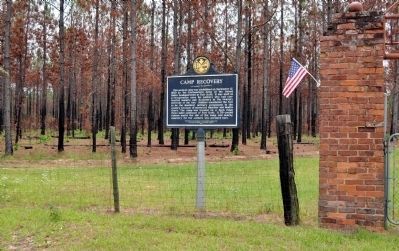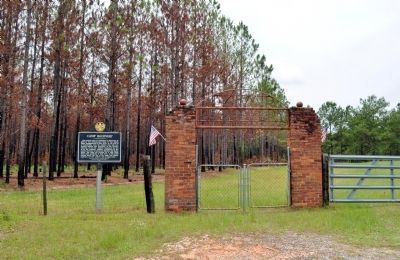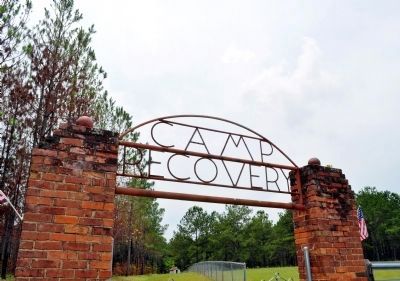Recovery in Decatur County, Georgia — The American South (South Atlantic)
Camp Recovery
Erected 1995 by Historic Chattachooche Commission and the Decatur County Historical Society.
Topics. This historical marker is listed in these topic lists: Military • Wars, US Indian. A significant historical month for this entry is September 1777.
Location. 30° 45.237′ N, 84° 43.901′ W. Marker is in Recovery, Georgia, in Decatur County. Marker is on Booster Club Road, 0.9 miles west of Hutchinson Ferry Road (Georgia Highway 97 Spur), on the left when traveling west. Hutchinson Ferry Road is also County Road 310 and GA Highway 97 Spur. Touch for map. Marker is in this post office area: Bainbridge GA 39819, United States of America. Touch for directions.
Other nearby markers. At least 8 other markers are within 8 miles of this marker, measured as the crow flies. Camp Recovery Monument (about 500 feet away, measured in a direct line); Fort Scott (approx. 1.1 miles away); Joshua Davis House (approx. 4˝ miles away in Florida); Ira Sanborn (approx. 5.4 miles away); Apalachicola Arsenal (approx. 6.8 miles away in Florida); a different marker also named Apalachicola Arsenal (approx. 7.2 miles away in Florida); United States Arsenal (1832-1861) (approx. 7.2 miles away in Florida); Charles James Munnerlyn / “Refuge” (approx. 7˝ miles away).
Regarding Camp Recovery. The cannon was one of three sent from Fort Clinch, Florida, in 1882 to mark the site of Camp Recovery and the cememtery. The other two 32 pound cannon marked the sites of Fort Hughes and Fort Scott.
Also see . . . Camp Recovery. A history of Camp Recovery, including the present ownership, with photos of the site, Visitor's Building, and the cannon (identified as a 32 pound cannon, not 34 as the marker states). (Submitted on June 3, 2012, by David Seibert of Sandy Springs, Georgia.)
Credits. This page was last revised on April 25, 2018. It was originally submitted on August 6, 2008, by David Seibert of Sandy Springs, Georgia. This page has been viewed 1,588 times since then and 36 times this year. Last updated on June 1, 2012, by David Seibert of Sandy Springs, Georgia. Photos: 1. submitted on August 6, 2008, by David Seibert of Sandy Springs, Georgia. 2, 3, 4. submitted on June 2, 2012, by David Seibert of Sandy Springs, Georgia. • Craig Swain was the editor who published this page.



